#magnesium b6
Text
Protéines - Vitamine et acides aminés sur myprotein
Vous êtes à la recherche d’un moyen sûr et naturel de vous maintenir en bonne santé et en forme?
vitamines
Les protéines, les vitamines et les acides aminés sont essentiels pour vous aider à atteindre cet objectif. Myprotein est un site Web qui propose une large sélection de produits nutritionnels pour vous aider à optimiser votre santé et votre bien-être.
Apprenez-en plus sur leurs produits et…
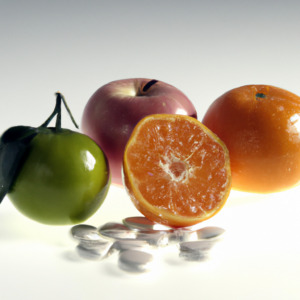
View On WordPress
#acide aminé#acide folique#acides aminés#barres protéinées#magnesium b6#myprotein#poudres protéinées#proteine#proteine vegetale#protéines#protéines végétales#regime proteine#shakes protéinés#vitamine b12#vitamine c#vitamine d#vitamine d3#vitamines
0 notes
Text
⭐Vitamin Cheat Sheet⭐
Vitamin A: Vision, immune system, skin health.
Vitamin B1 (Thiamine): Energy metabolism, nerve function.
Vitamin B2 (Riboflavin): Energy production, skin health.
Vitamin B3 (Niacin): Cellular energy production, skin health.
Vitamin B5 (Pantothenic Acid): Metabolism, hormone production.
Vitamin B6: Brain function, mood regulation.
Vitamin B7 (Biotin): Healthy hair, skin, and nails.
Vitamin B9 (Folate): Cell division, DNA synthesis.
Vitamin B12: Nervous system, red blood cells.
Vitamin C: Immune system, collagen synthesis.
Vitamin D: Bone health, immune function.
Vitamin E: Antioxidant, skin health.
Vitamin K: Blood clotting, bone health.
Calcium: Bone and teeth health, muscle function.
Iron: Oxygen transport, energy production.
Magnesium: Nerve function, muscle relaxation.
Zinc: Immune system, wound healing.
Potassium: Fluid balance, nerve function.
Iodine: Thyroid function, metabolism.
Selenium: Antioxidant, thyroid health.
#vitamins#health and wellness#healthy living#health tips#healthyhabits#healthy lifestyle#nutrition#supplements#wellness#wellbeing#health is wealth#self care#food#healthy diet#skincare#lifestyle#green juice girl#clean girl aesthetic#fitness
32K notes
·
View notes
Text
Nutriplus Multivitamin and Mineral for Women - 60 Tablets - Farmasi USA
https://farmasius.com/ua000007/product/detail/nutriplus-multivitamin-and-mineral-for-women-60-tablets?pid=1001135
Strengthen your bones, boost your immunity, support your cycle, support vision health, and improve your energy with the perfect doses of Vitamin B12, B6, Folic Acid, Calcium, Magnesium, Iron, Biotin, and more.
YOUR DAILY DOSE
It’s recommended for adults to take 2 tablets per…
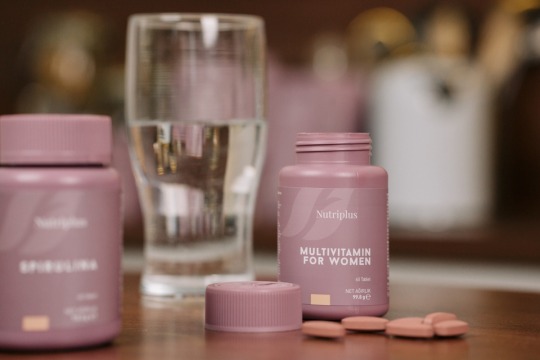
View On WordPress
#and more#B6#Biotin#Calcium#Coating: (hydropropylcellulose#Folic Acid#Hydropropylmethylcellulose#Iron#Iron Oxide Black Color#Iron Oxide Red Color#Iron Oxide Yellow Color)#Magnesium#Magnesium Stearate#Maltodextrin#Microcrystalline Cellulose#Silicon Dioxide#Talc#Titanium dioxide#Vitamin B12
0 notes
Text
Chillies and their Spiciness
Chillies are an inseparable constituent of any cooked vegetable and meats. The spiciness adds to the taste of vegetables and meats. It is also a fact that chillies are very rich in vitamin C, Magnesium, vitamin B6, iron, and potassium and have very good health benefits.Degree of spiciness or the heat of a chilli will be directly proportional to its capsaicin content. The sensation also masks the…
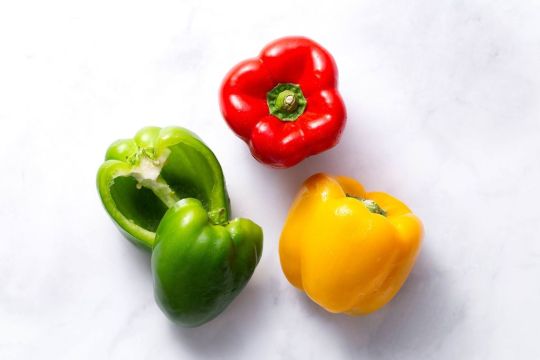
View On WordPress
#Bell pepper#Bhoot Jhalokia#capsaicin#Carolina reaper#chillies#iron#magnesium#Meals#naga chilli#nutrients#pepper#potassium#Scoville scale#SHU#taste#Trinidad Moruga Scorpion#Vitamin B6#Vitamin c
0 notes
Text
Night Mega Burner : Weight Loss
Night Mega Burner is a multi-ingredient supplement that supports weight loss and stress reduction at night. Its ten ingredients, including plant extracts, vitamins, and minerals, contribute to regulating hormonal activity and maintaining normal protein and glycogen metabolism. The product promotes deep sleep and relaxation, making it easier to fall asleep. Green tea extract increases metabolism, while L-tryptophan helps to regulate mood and appetite. Magnesium and L-theanine reduce stress and anxiety, while zinc supports the immune system. Night Mega Burner is a powerful solution that helps achieve weight loss goals and improves overall well-being.

#Night Mega Burner#multi-ingredient supplement#weight loss#stress reduction#relaxation#hormonal activity#protein metabolism#glycogen metabolism#plant extracts#vitamins#minerals#green tea extract#L-tryptophan#magnesium#zinc#chromium#L-theanine#vitamin B6.
0 notes
Note
Question about Cycle Syncing. Do you know where i can find, like a masterlist of food that fits into the steps of the cycle? I always see the same food but how abt the rest? Would be nice to know for example for meal building.
MASTERLIST: NUTRITION CYCLE SYNCING

This post is a masterlist of everything that is recommended you eat while cycle syncing. if you don’t know what that is, read this beginner guide.
This post is a researched post, because I actually couldn’t find a proper masterlist. So, I researched what kinds of nutrients you need during your 4 phases, but I am NO DOCTOR. Just a little disclaimer!
MENSTRUAL/FOLLICULAR PHASE - high iron, vitamin C foods
VEGETABLES
Spinach
Silver beet
Broccoli
String beans
Peas
Sweet potatoes
Beet greens
Dandelion greens
Collards
Chard
Chilli peppers
Sweet yellow peppers
Parsley
Brussel sprouts
FRUITS
Oranges
Guavas
Black currants
Cantaloupe
Kiwis
Lemons
Lychees
Papayas
Strawberries
Oranges
Watermelon
Figs
Prunes
PROTEINS
Beef
Lamb
Liverwurst
Pork
Veal
Dried beef
Eggs
Shrimp
Clams
Tuna
Sardines
CARBS/OTHER
Whole wheat bread
Enriched pasta
Rye bread
Enriched rice
Tofu
Beans
Lentils
OVULATORY PHASE – complex carbs, lean proteins, anti-inflammatory, vitamin B6, folate/choline
VEGETABLES
Carrots
Spinach
Sweet potato
Red potato
Green peas
Chickpeas
Butternut squash
Asparagus
Turnip greens
Romaine lettuce
Beets
Sweet corn
Mushrooms
Pumpkin
Parsnip
Cauliflower
FRUITS
Bananas
Avocado
Mango
Blueberries
Apple
Peaches
Tangerine
Pink grapefruit
lemons
PROTEINS
Egg whites
Strained yoghurt
Skinless white meat poultry
Plain greek yoghurt
Low fat cottage cheese
Tofu
Lean beef
Powdered peanut butter
Beef liver
Pork loin
Bison
Organ meat
CARBS/OTHER
Lentils
Kidney beans
Green peas
Walnuts
Flaxseeds
Cashews
Almonds
Pistachios
LUTEAL PHASE – High fibre, vitamin B12, magnesium
VEGETABLES
Spinach
Swiss chard
Collard greens
Green peas
Sweet corn
Cabbage
Arugula
Bok choy
Celery
Lettuce
FRUITS
Pears
Strawberries
Avocado
Apples
Raspberries
Blackberries
Blueberries
Bananas
PROTEINS
Animal liver
Animal kidney
Clams
Swiss cheese
Turkey
Crabs
Ham
CARBS/OTHER
Oats
Popcorn
Almonds
Fresh coconut
Sunflower seeds
Dark chocolate
Wheat
barley
#menstrual cycle#women’s cycle#cycle syncing#women’s health#health#self healing#clean girl#green juice girl#cleaneating#healthy eating#healthy girl#glow up#glow up era#nutrition#healthy diet#meal prep#meal plan#anonnie#ask
331 notes
·
View notes
Text
for the anon with heavy periods, here are some changes you can make to manage it
increase your intake of these nutrients:
iron: obviously necessary to replenish blood loss, but if you’re anemic before your period, your flow will be heavier as well. sources: red meats, chicken, oysters, beans, dark leafy greens, tofu, pumpkin seeds, an iron fish.
vitamin C: for absorption of iron and to strengthen capillaries, reducing bleeding. sources: rosehips (you can buy a bag of organic dried rosehips to put in tea, it’s florally and kinda fruity,) yellow bell peppers, cantaloupe, citrus, strawberries, and dark leafy greens
vitamin K: when it comes to blood clotting, vitamin k is essential. supplementing it has been shown to reduce heavy menstrual bleeding in women who otherwise have no known blood clotting disorders sources: spinach, kale, collard/mustard greens, broccoli
omega 3s: anti-inflammatory and helps produce prostaglandins that regulate the menstrual cycle and flow. sources: mackerel, salmon, sardines, oysters, brussel sprouts, tofu, navy beans, and fish oil supplements
vitamin B6: b6 helps regulate production of serotonin and dopamine and regulates production of PgE1, a prostaglandin that’s been proven to affect menstrual cycle regularity and flow. sources: avocado, spinach, banana, sunflower seeds. this is one i recommend supplementing (along with b12) if your general health is poor.
other stuff:
blood clotting medications: tranexamic acid is the most common one, also called Lysteda, and it isn’t as scary as it sounds. it’s a blood clotting medication for adults only, used after childbirth frequently, and they even give it to people with chronic nosebleeds. there’s also Desmopressin nasal spray which has a different mechanism but the same effect. talk with your dr about side effects, but please do your own research! physicians unfortunately rarely have our best interest at heart and will often fail to inform you of side effects or drug interactions.
ginger: an anti-inflammatory, can ease pain. inhibits the enzymes prostaglandin synthetase and cyclooxygenase, both of which can create a prostaglandin imbalance that causes heavy menstrual bleeding and irregularity
raspberry leaf tea: contains fragarine, an alkaloid thought to help pelvic floor muscle cramps, reduce pain, and shorten period length. don’t drink more than 2 servings if you’re extremely sensitive to estrogen. some women swear this is their holy grail for PMS
cruciferous veggies like broccoli and brussel sprouts help your body eliminate extra estrogen which can reduce bleeding and shorten period length.
i’ll include more about all of the above stuff and other helpful nutrients for PMS like potassium, magnesium, etc in my next post about diet based on your cycle, this was just a quick post for supplements specifically to reduce a heavy flow.
lastly, stay hydrated and rest as much as possible during your period, easier said than done
menorrhagia is defined as abnormal blood loss during menstruation. this means heavy flow lasting for over a week and/or totaling greater than 80 ml (~1/4 cup) per month. if your symptoms are having an impact on your quality of life, consider seeing your gyno to find an underlying cause.
(disclaimer: i’m a dropout whose only medical training is as a lab tech and phlebotomist. i am in no way a health professional. none of this should be taken as expert medical advice)
#women's health#i'll update this i'm sure i missed stuff i didn't take my stimulants today#period health#radical feminism#radblr#my post#radfems do touch#affect or effect#radfem safe
1K notes
·
View notes
Text
Intermediate Kitchen Witchcraft: Nutrition
The ideas of nutrition and healthy eating have been corrupted by the diet industry. Auntie says fuck that. Think of nutrition as a matter of nutrients. Don’t take, don’t deprive. Add to your body!
For intermediate witchcraft, think of things as macronutrients (big) and micronutrients (small). A macronutrient is what your body uses the most of, while a micronutrient is what your body uses a smaller amount of.
Macronutrients are: protein, fat, and carbohydrates. Your body needs all three of them - yes, even fat and carbs. Fuck what the diet industry told you and listen to Auntie: it is not only ok to eat fat and carbs, it is actively a good thing.
Micronutrients are: vitamins and minerals. Your body is a gloriously complex, divine structure that requires a steady supply of the Earth’s bounty to thrive. You can use these amazing things She has given us to improve your body and your mind. Use what She gives you!
Let’s take a look at some common magical ingredients and the micronutrients they give you! This will help provide you with a greater understanding of how to use them to craft your kitchen spells. Magical properties are purple, practical are pink.
Cinnamon: Healing, protection, warmth, love, prosperity. Vitamins A, B, C, K; calcium; magnesium; potassium; phosphorus. Useful in lowering blood pressure, high in antioxidants, can improve insulin sensitivity, protects against heart disease, powerful anti-inflammatory. Connect the practical value to the magical value. What do you think corresponds? The one that jumps out to me is love corresponding to heart health.
Lemons: Purification, cleansing, joy. Extremely high in Vitamin C; fiber; B6; potassium. Lowers your risk of kidney stones, antiseptic properties, big immune booster. Once again, compare the practical and magical uses. I see vitamin B6 connecting to joy - B vitamins are known to improve stress responses.
Arugula: Attraction, abundance, sex magic, psychic powers. Potassium, calcium, folate; vitamins B, C, D, K, and A. Calcium & vitamin D work together for bone health; eye health; high in antioxidants; improves iron absorption; contains many elements shown to reduce cancer risks. I see a connection in iron absorption and sex magic.
Now, while these are a very direct nutrient-to-association correlation, we do also need to remember that there are other factors. Taste is a huge factor in kitchen magic! Cinnamon associates to a warm disposition; cinnamon is a hot food. Lemons are a sunny food. Arugula is easy to grow, therefore it is abundant.
Homework:
Comment below with your connections on the ingredients listed above. OR
Choose your favorite magical ingredient and reblog it with an analysis of how its magical properties correlate to its practical properties. Feel free to delve into some of the other connections too!
#witchcraft#witch#witchy#kitchen witch#witchblr#witchy community#witches of tumblr#witch tips#intermediate witch#intermediate witchcraft
171 notes
·
View notes
Text
Dandelion Lotion Recipe
Here I am again, singing the praises of dandelions. As we already know by now, dandelions are high in Vitamin A, C, and B6, all of which provide excellent benefits for your skin!
The flowers contain high levels of beta carotene and lutein. Dandelion is high in magnesium, calcium, and potassium as well. All of these constituents provide support to the skin by helping with moisture retention and supporting skin function.

Ingredients:
5.6 ounces of distilled water
0.24 ounces of stearic acid
0.4 ounces emulsifying wax
1.76 ounces dandelion infused oil (here’s my post on making infused oils)
0.4 ounces preservative (Leucidal)
Optional: essential oil of choice (I always love using cinnamon)
Instructions:
Get a double boiler set up that will hold two small containers, like 8 ounce jelly jars. I use a wide pan, place a washcloth at the bottom, and fill with about an inch to two inches of water. This pan should hold two of the jars.
Measure out your water using a digital kitchen scale into one of the small jars
Measure out your oil, stearic acid, and emulsifying wax using the kitchen scale and place these into a separate small jar.
Cover the water jar with a lid to prevent water from escaping through evaporation.
Place both jars into the pan, and heat gently on low until the oil mixture is completely melted together
Remove the jars from the pan, and allow to cool to about 110 degrees
Pour your water into the oil mixture, and add your preservative and essential oils (if using)
Stir these together quickly with a fork. As it cools, you’ll see the mixture emulsify, or come together and start turning into a cream
Pour your cream or lotion into small jars
If your lotion tries to separate, just mix it up good again. As it cools to room temperature, it should stop doing this.
#herbalism#herbs#herbalism recipe#kitchen witch#green witch#witch#witchy#wicca#witchcraft#appalachian mountains#foraging
122 notes
·
View notes
Text
How i reduce the harm on my body with my ed
I’ve studied biology and psychology and i know a lot of the things that the body and brain needs, and what keeps your organs healthy while you fast.
I know i can’t stop you from fasting, and i won’t try to because I know its difficult as hell, but you need to make sure your body is gonna be able to survive.
Drink enough water!! Have at least 3 bottles of water a day, it boosts your metabolism but not eating makes you more dehydrated so you need to keep drinking!
Get your vitamins and minerals in you :
- Your body needs these things to function and will break down without them. This also helps me with hiding my disorder. I take supplements, dissolving a tablet filled with most of the things i need into one of my bottles of water in the morning. Mine has : potassium, chloride, magnesium, zinc, manganese, copper, vitamin C, niacin, pantothenic acid, vitamins B6, B1, B2, E, A, B12, folic acid and biotin.
- The other main thing you need is calcium. The heart cannot function properly without enough calcium, so without enough you will probably faint. Skimmed milk is how i get this in me, it only has about 35 calories per 100ml and has a lot of calcium and has some other things in it to keep your body healthy.
- Get out in the sun! This stimulates vitamin D production and the fresh air and sun will help you feel more awake so you don’t need as much caffeine which can be harmful in large quantities.
- There are some iron supplements you can take too! Iron is important for helping with fatigue and you can easily buy some iron water, that you can pour into orange juice or another drink to keep your levels high enough. They taste a bit icky but its so worth it.
- Electrolytes. I cannot stress this enough. My favourite way to get my electrolytes is by drinking smart water. 0 calories and you can’t taste them but your body will be grateful.
Getting your vitamins and minerals will also help with any cravings, reducing them so you can get through your fast.
Drink tea! Keeps you warm since your body doesn’t have the calories to maintain the temperature fully, plus you can get lots of flavours and it has a little bit of caffeine, enough to keep you stimulated but not too much that could be harmful.
If you feel sleepy, don’t drink caffeine. I know its tempting but you can develop an addiction and that will hurt your body even more. Try drinking some water, or upping your iron levels. Or even take a nap. Sleep burns calories without you doing anything and it will stop the hunger pains for the time you are asleep. Sleep is so important as your body needs as much rest as it can get, to heal without the proper diet it is used too, and for boosting your metabolism.
#harm reduction#anorexik#anor3x1a#pro ana#pro mia#not pro anything just using tags#not pr0 4n4#not pr0 mia
948 notes
·
View notes
Text
Foods You Can Eat Instead of Taking Vitamins and Supplements 🍎🥥🥦🥑🍌
Vitamin A: Carrots, sweet potatoes, spinach, kale.
B Vitamins: Whole grains, meat, eggs, nuts, legumes.
Vitamin B1 (Thiamine): Whole grains, legumes, nuts, pork, fortified cereals.
Vitamin B2 (Riboflavin): Dairy products, lean meats, almonds, leafy greens.
Vitamin B3 (Niacin): Poultry, fish, nuts, legumes, whole grains.
Vitamin B5 (Pantothenic Acid): Meat, poultry, eggs, avocado, whole grains.
B6: Chicken, turkey, fish, bananas, chickpeas.
Folate (Vitamin B9): Leafy greens, legumes, citrus fruits, fortified grains.
Vitamin B12: Animal products (meat, fish, dairy), fortified plant-based foods.
Vitamin C: Citrus fruits, strawberries, bell peppers.
Vitamin D: Fatty fish (salmon, mackerel), fortified dairy products, sunlight.
Vitamin E: Sunflower seeds, almonds, vegetable oils, nuts, spinach, broccoli.
Vitamin F (Essential Fatty Acids): Fatty fish, flaxseeds, chia seeds, walnuts.
Vitamin H (Biotin): Eggs, nuts, sweet potatoes, salmon, avocado.
Vitamin K: Leafy greens (kale, spinach), broccoli, Brussels sprouts.
Vitamin K2: Fermented foods (natto, cheese), animal products, leafy greens.
Vitamin L1 (Anthranilic Acid): Cruciferous vegetables (cabbage, cauliflower), legumes.
Vitamin P (Bioflavonoids): Citrus fruits, berries, onions, green tea.
Vitamin Q (Ubiquinone): Fatty fish, organ meats, spinach, cauliflower.
Vitamin T (L-carnitine): Red meat, poultry, fish, dairy products.
Vitamin U (S-Methylmethionine): Cabbage, broccoli, Brussels sprouts.
Betaine: Beets, spinach, whole grains, seafood.
Boron: Fruits (apples, pears), legumes, nuts, avocado.
Calcium: Dairy products, leafy greens (kale, collard greens), almonds.
Carnosine: Beef, poultry, fish.
Carnitine: Red meat, dairy products, fish.
Catechins: Green tea, black tea, dark chocolate.
Choline: Eggs, liver, beef, broccoli, soybeans.
Creatine: Red meat, fish, poultry.
Chromium: Broccoli, whole grains, nuts, brewer's yeast.
Chondroitin: Cartilage-rich foods (bone broth, connective tissue of meat).
Copper: Shellfish, nuts, seeds, organ meats, lentils.
Coenzyme Q10 (CoQ10): Fatty fish, organ meats, nuts, soybean oil.
Ellagic Acid: Berries (strawberries, raspberries), pomegranates.
Glucosinolates: Cruciferous vegetables (cabbage, broccoli, cauliflower).
Glucosamine: Shellfish (shrimp, crab), bone broth, animal connective tissues.
Glutamine: Dairy products, meat, poultry, cabbage.
Inositol: Citrus fruits, beans, nuts, whole grains.
Iodine: Seafood, iodized salt, dairy products.
Iron: Red meat, poultry, beans, lentils, spinach.
L-Theanine: Mushrooms, black tea, white tea, guayusa.
Lignans: Flaxseeds, whole grains, cruciferous vegetables.
Lutein and Zeaxanthin: Leafy greens (spinach, kale), corn, eggs.
Lycopene: Tomatoes, watermelon, pink grapefruit.
Magnesium: Spinach, nuts, seeds, whole grains, beans.
Manganese: Nuts, seeds, whole grains, leafy greens, tea.
Melatonin: Cherries, grapes, tomatoes.
Omega-3 fatty acids: Flaxseeds, chia seeds, walnuts, fatty fish.
PABA (Para-Aminobenzoic Acid): Whole grains, eggs, organ meats.
Pantothenic Acid (Vitamin B5): Meat, poultry, fish, whole grains, avocado
Pectin: Apples, citrus fruits, berries, pears.
Phosphorus: Dairy products, meat, poultry, fish, nuts.
Prebiotics: Garlic, onions, leeks, asparagus, bananas (unripe), oats, apples, barley, flaxseeds, seaweed.
Probiotics: Yogurt, kefir, fermented foods (sauerkraut, kimchi).
Potassium: Bananas, oranges, potatoes, spinach, yogurt.
Polyphenols: Berries, dark chocolate, red wine, tea.
Quercetin: Apples, onions, berries, citrus fruits.
Resveratrol: Red grapes, red wine, berries, peanuts.
Rutin: Buckwheat, citrus fruits, figs, apples.
Selenium: Brazil nuts, seafood, poultry, eggs.
Silica: Whole grains, oats, brown rice, leafy greens.
Sulforaphane: Cruciferous vegetables (broccoli, Brussels sprouts), cabbage.
Taurine: Meat, seafood, dairy products.
Theanine: Green tea, black tea, certain mushrooms.
Tyrosine: Meat, fish, dairy products, nuts, seeds.
Vanadium: Mushrooms, shellfish, dill, parsley, black pepper.
Zeatin: Whole grains, legumes, nuts, seeds.
Zinc: Oysters, beef, poultry, beans, nuts, whole grains.
#women health#health and wellness#healthy diet#healthy living#healthy lifestyle#womens health#health#health tips#wellness#levelupjourney#dream girl guide#dream girl tips#dream girl journey#health is wealth#clean girl aesthetic#clean girl#it girl#nutrition#supplements#organic#food#nutrients#healthyhabits#healthy life tips#self love journey#self love#dream life#dream girl
2K notes
·
View notes
Text
Supplements that seem to be helping me a lot lately:
Omega 3-6-9 and Vitamin D3 + K2 in the morning. These have helped me with general fatigue and given me a normal functioning amount of energy. It’s also been a godsend during these colder months.
Zinc + magnesium aspartate + vit B6 at night. This one has been a lifesaver for me- I get such restful sleep, my body recovers faster after a workout and it’s also helped me with my hairfall.
#supplements#health#womens health#nutrition#feminine health#self love#healing#self care#hairfall#chronic fatigue#mental fatigue#muscle fatigue#chronically fatigued#mine
29 notes
·
View notes
Text
Life Hack: Red Lentils Improve Your Physical & Financial Health
If you do not regularly eat red lentils and you are not allergic to them or otherwise unable to eat them, and you want to experience an immediate improvement in your quality of life, health, and financial situation, you need to know about red lentils.

You can buy these dried for like $2.20 for a pound, or cheaper.
But here's the kicker. They are so easy to cook, even easier than regular green or brown lentils. They are a great lazy food, so easy that they are almost like an instant meal.
Unlike most dried beans, you don't need to soak them. Like, you need to rinse them, but that's it. Like put some in a bowl, cover with water and mix them until they all sink to the bottom, then pour off as much of the water as you can without spilling them. That's it. You rinsed them. They are now ready to cook.
Now you cook them by boiling them in a pot. They cook in 10 minutes. Unlike green lentils which take more like 40 minutes if not soaked. Only 10 minutes and they're soft. If you want them firmer you can cook them shorter, like 8 minutes.
They are so forgiving. I don't even measure the water, like if you put more water in, they come out thinner and soupier. Less water, they come out thicker like a stew. You can cook them less than 10 minutes or more and they will still taste great.
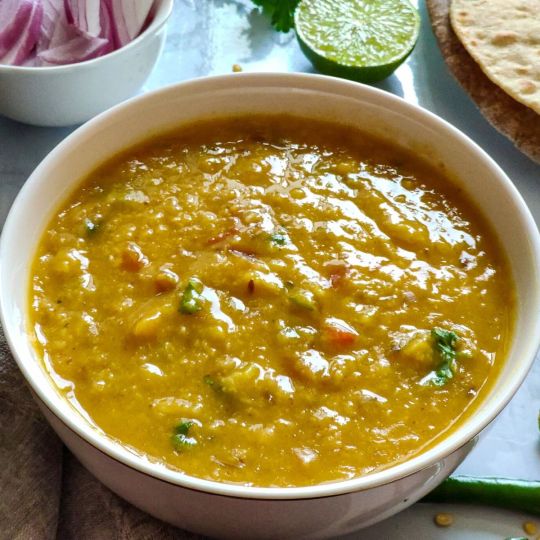
They are incredibly nutritious. If I'm having them as the main thing for dinner, I eat about 1/2 cup dried which turns into maybe about a cup cooked, depending on how much water I added. This much has:
23 grams of protein
36% of your fiber
41% of your B1
23% B6
49% of your Folate / B9
139% Copper
39% Iron
13% Magnesium
14% Potassium
31% Zinc
240mg Omega 3 fat (ALA) or about 15-22%
Pretty much no unhealthy things for most people.
These nutrients are a big deal. A lot of people are deficient in folate, iron, magnesium, zinc, and some in copper, so these are hitting a bunch of common nutritional deficiencies. And they're so high in iron and Folate, B1, and Zinc that if you eat these you're unlikely to end up with a deficiency in any of these nutrients.
And just to let this sink in, this is more protein than 3oz of chicken. And that $2.20 container? It contains 5 servings like the one above. The protein cost about 2 cents per gram which is incredibly cheap as protein sources go. The protein quality (in terms of balance of amino acids) is better than some beans too, i.e. it is relatively more complete than a number of types of beans.
I also love how I feel after eating these. Like sometimes eating too many beans gives me gas. But not these, when I buy dried red lentils and cook them like described above, I feel light and energetic and have no problem with gas.
There is strong evidence that eating lentils is protective against heart disease and cancer so they can help you live longer too.
You can also add so many things to them. The basic thing is to add just the right amount of salt, but when I'm cooking them, I like to add olive oil, spices, herbs, and also dice up some carrots and other vegetables, even something like broccoli. Because they cook fast, you want to dice stuff up into small cubes if you throw it in, so the other ingredients will also cook fast.
I wish I had discovered this food earlier in life. I have been eating lentils for years but for some reason never tried the red ones and never realized they are so much easier to cook. Yeah, other ones are great too but they cook much slower and thus require much more time/effort.
18 notes
·
View notes
Text

Stuffed Butternut Squash with Sausage, Spinach, Pecans, and Cranberries.
[𝐆𝐋𝐔𝐓𝐄𝐍-𝐅𝐑𝐄𝐄, 𝐃𝐀𝐈𝐑𝐘-𝐅𝐑𝐄𝐄]
Main ingredients
Butternut squash is rich in dietary fiber and is an excellent addition to your menu. This winter squash is a great source of vitamins A, B6, C, and E, as well as several minerals, including magnesium, manganese, and potassium.
Sausage. I used spicy crumbled Italian sausage.
Onion. The onion is lightly caramelized in the beginning and then combined with the sausage. You can use any variety of onions: sweet onions, yellow onions, or white onions.
Spinach. It’s high in fiber and a good source of many vitamins and minerals. I used fresh spinach which I added to the skillet with the cooked sausage. You can also use frozen spinach (thawed completely and drained of any liquid). Another option is kale.
Nuts. Pecans add crunch and texture to this stuffed winter squash. Or, use walnuts.
Dried cranberries. They add sweetness to the sausage mixture.
Italian seasoning combines dried herbs, such as thyme, sage, and oregano. Or, use Herbs de Provence.
+
The Directions
This is a quick overview of recipe instructions along with helpful step-by-step photos. For a complete and detailed recipe, scroll down to the recipe card.
1) Roast the squash. You will need 2 medium or large-size butternut squash. Carefully slice each one in half, and scoop out the seeds. You will have 4 butternut squash halves. Roast in the preheated oven at 400 F for 30 or 40 minutes.
2) Make the filling. While the squash is being roasted, prepare the sausage filling. First, cook together onions and sausage. Then, add Italian seasoning and minced garlic. Finally, add spinach, cooking it until it wilts. Then, mix in dried cranberries and pecans.
+
3) Prepare the roasted butternut squash halves for stuffing. Using a spoon, scoop out the flesh leaving about a 1-inch border along the sides.
4) Stuff the squash. Reheat the sausage filling on the stovetop if needed and then add it into the cavities of each of the 4 butternut squash halves. The dinner is ready!
Cooking tips
Use cooking time efficiently by preparing the sausage stuffing while you roast the butternut squash in the oven.
Salt. I did not add any salt to the sausage mixture, because the sausage I used was salty enough. I did season the squash generously with salt and pepper when I roasted it.
Reheat the sausage mixture. Before you stuff the butternut squash with the sausage mixture, reheat the sausage filling in the same skillet on the stovetop right before adding it to the freshly roasted squash halves to keep everything hot before serving.
[Julia's Album]
24 notes
·
View notes
Text
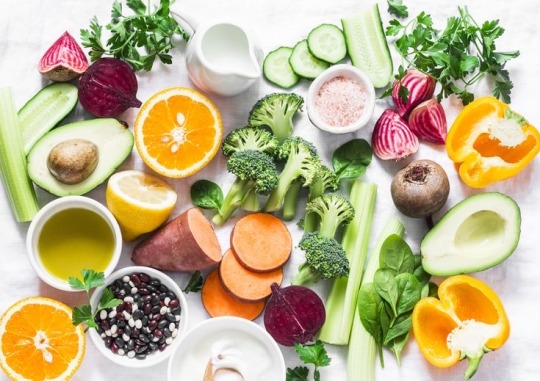
There are several other vitamins and minerals that play important roles in brain function, mood regulation, and memory. Here are some key nutrients that are essential for brain health:
1. B Vitamins: B vitamins, including B6, B9 (folate), and B12, are crucial for brain function and the production of neurotransmitters. They help support cognitive function, mood regulation, and memory. Foods rich in B vitamins include whole grains, leafy green vegetables, nuts, seeds, legumes, eggs, and dairy products.
2. Omega-3 Fatty Acids: Omega-3 fatty acids, specifically docosahexaenoic acid (DHA) and eicosapentaenoic acid (EPA), are important for brain health and cognitive function. They are essential for building and maintaining brain cell membranes and are thought to help support neurotransmitter function. Sources of omega-3 fatty acids include fatty fish (such as salmon, mackerel, and sardines), flaxseeds, chia seeds, and walnuts.
3. Magnesium: Magnesium is involved in hundreds of biochemical reactions in the body, including those related to brain function. It plays a role in neurotransmitter regulation, mood stabilization, and memory. Magnesium-rich foods include leafy green vegetables, nuts, seeds, whole grains, and legumes.
4. Zinc: Zinc is an important mineral for brain health and neurotransmitter function. It is involved in the regulation of mood, memory, and cognitive function. Good sources of zinc include meat, shellfish, nuts, seeds, and legumes.
5. Vitamin D: Vitamin D is essential for overall brain health and cognitive function. It plays a role in neurotransmitter production and mood regulation. Vitamin D can be obtained through exposure to sunlight and through foods such as fatty fish, eggs, and fortified dairy products.
Incorporating a balanced diet rich in these nutrients, along with regular physical activity, adequate sleep, and stress management, can help support overall brain health and cognitive function.
#healthy food#food for thought#food fight#comfort food#fast food#food photography#foodie#food#foodpics#foodlover#japanese food#foodmyheart#tw food#lunch recipes#pasta recipes#pasta recipe#recopilación#salad recipes#soup recipe#recipe#reciprocity#recipies#recipes#healthy salad recipes#cozy fall#cozyhome#cozy cozy#cozy living#autumn cozy#cozy art
7 notes
·
View notes
Text
rly didn’t feel like eating just wanted liquids but i drank some water, 2 cups honey milk black tea, 1 cup sticky rice oolong tea, 8oz vanilla oat milk cold brew iced latte, ate 1 slice of toast with butter and took liquid vit b6, liquid calcium/magnesium/vit d, and a few cbd oil drops
wanna let my stomach settle a little before i microdose
15 notes
·
View notes